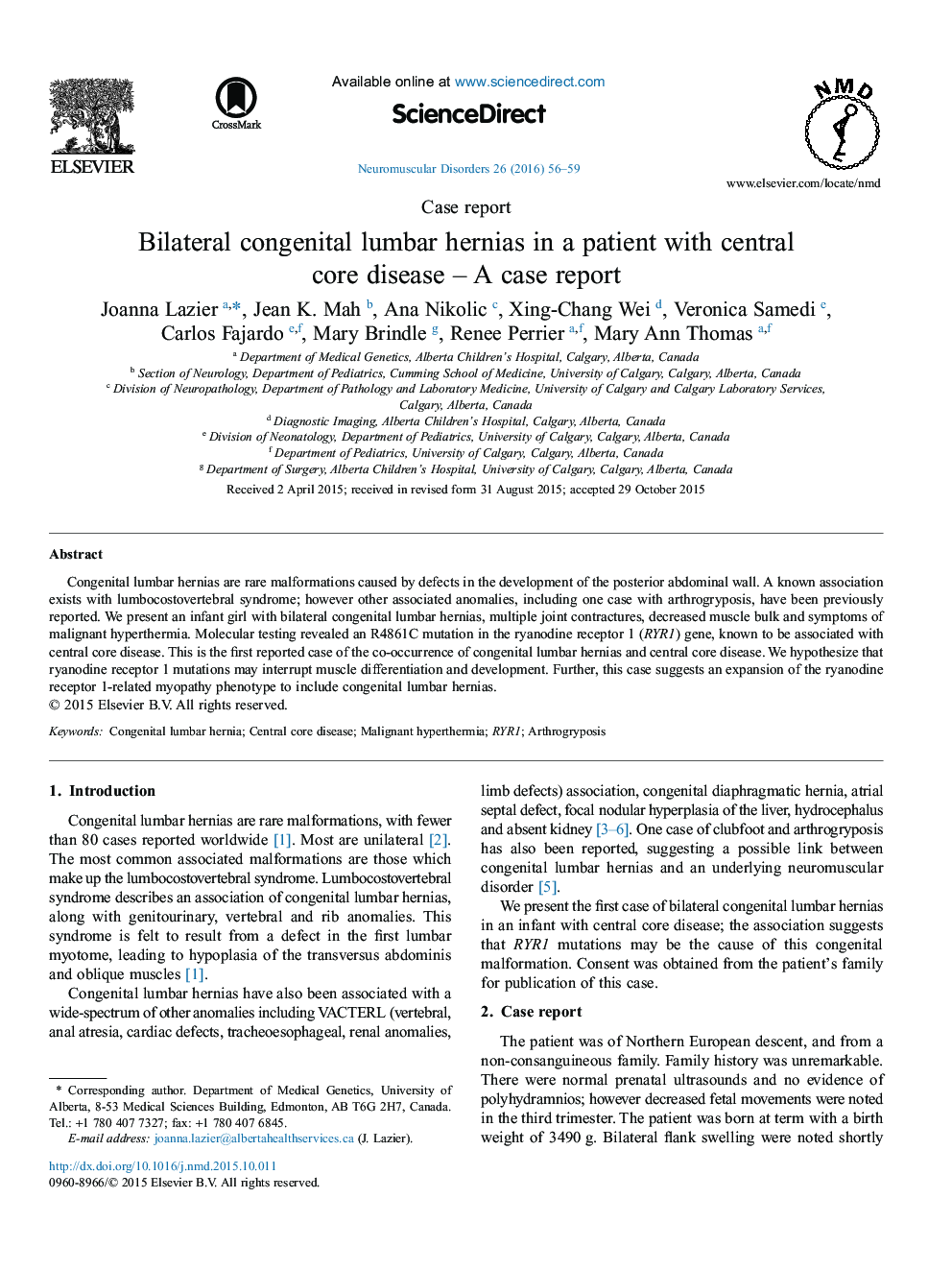| کد مقاله | کد نشریه | سال انتشار | مقاله انگلیسی | نسخه تمام متن |
|---|---|---|---|---|
| 3078848 | 1189271 | 2016 | 4 صفحه PDF | دانلود رایگان |
• We present the first case of congenital lumbar hernias and central core disease.
• RYR1 mutations may interrupt muscle development leading to both pathologies.
• This case suggests as expansion of the RYR1-related myopathy phenotype.
Congenital lumbar hernias are rare malformations caused by defects in the development of the posterior abdominal wall. A known association exists with lumbocostovertebral syndrome; however other associated anomalies, including one case with arthrogryposis, have been previously reported. We present an infant girl with bilateral congenital lumbar hernias, multiple joint contractures, decreased muscle bulk and symptoms of malignant hyperthermia. Molecular testing revealed an R4861C mutation in the ryanodine receptor 1 (RYR1) gene, known to be associated with central core disease. This is the first reported case of the co-occurrence of congenital lumbar hernias and central core disease. We hypothesize that ryanodine receptor 1 mutations may interrupt muscle differentiation and development. Further, this case suggests an expansion of the ryanodine receptor 1-related myopathy phenotype to include congenital lumbar hernias.
Journal: Neuromuscular Disorders - Volume 26, Issue 1, January 2016, Pages 56–59
